The Death of Keywords? How AI Search is Reshaping SEO
The only constant is change, and in today’s digital world, AI is leading the way. Powered by machine learning and vast amounts of data, AI is transforming search engines—helping users find precise answers faster than ever. Have you noticed short blurbs answering your query appearing at the top of search results? That’s AI! But does that mean we don’t need blogs anymore?
AI-powered search engines pull information from web pages and online articles, just like traditional search engines. However, they use advanced AI models, knowledge graphs, and natural language processing (NLP) to understand queries, analyse their context, and generate more nuanced, insightful, and relevant responses.
While AI-generated summaries can be useful for quick questions, in-depth blogs, videos, and articles are still necessary for a deeper understanding of a topic. Then, what changes for blogs and businesses? To reach their audience, they must now optimize their content to rank in AI-generated responses.
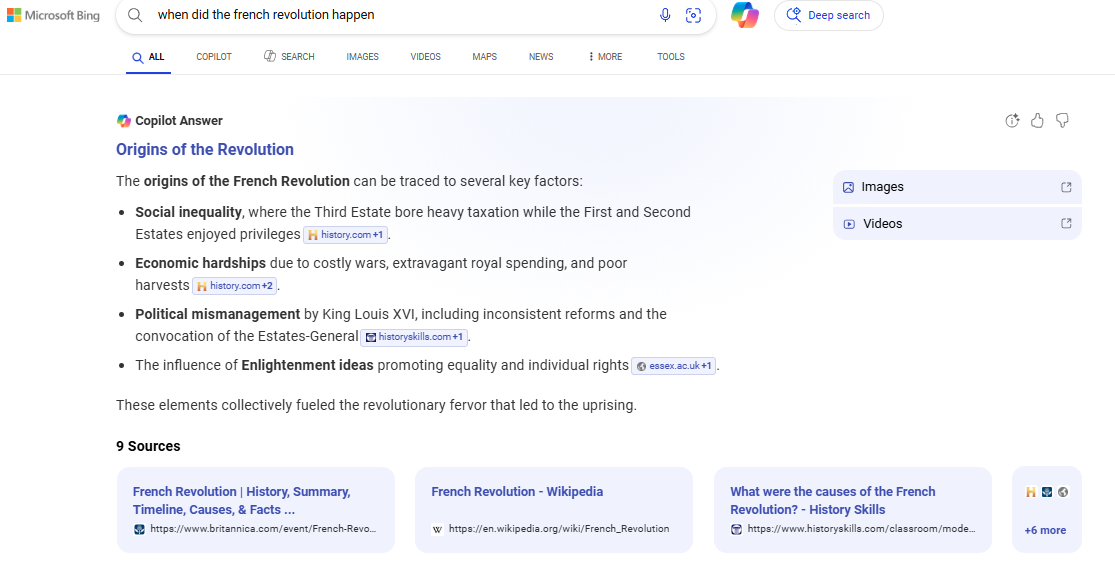
Are Keywords Still Relevant?
Gone are the days when stuffing blogs with popular keywords would push pages to the top of search results. But AI-driven search engines do not just match keywords; they analyse user intent, past search behaviour, and browsing patterns to deliver highly relevant and personalised answers.
While keywords remain important, their role is evolving. Instead of banking solely on keyword matches, websites need to be cognizant of user search intent and create content that addresses those queries.
Then, how can you know what users want? Parallel to AI search engines, new AI tools have emerged that analyse user patterns. More like a cheat code, tools like Ahrefs and AnswerThePublic help you analyze search patterns, revealing long-tail keywords, trending queries, and content gaps that websites can leverage. In addition, analyzing search engine results pages (SERPs) helps you identify content patterns and spot gaps—opportunities to meet users’ search intent in terms of quality, explanation, or expertise.
The idea of using big data to understand what people want isn’t new. Amazon analyzes large amounts of data to recommend products, politicians use data to understand voters and shape their campaigns, and even Netflix’s CEO, Ted Sarandos, admitted that the company used data to see what’s popular and decide what shows to produce—like ‘Orange is the New Black’ and ‘House of Cards’. But such AI tools are advanced and accessible now, enabling businesses gain deeper insights into audience preferences, hence, opportunity to meet them.
For example, if you own a jewellery brand and want to attract customers through blogs, you would start by discerning what they’re searching for and where can you deliver. By entering “Indian jewellery” into platforms like AnswerThePublic, you can obtain a detailed list of trending user inquiries.
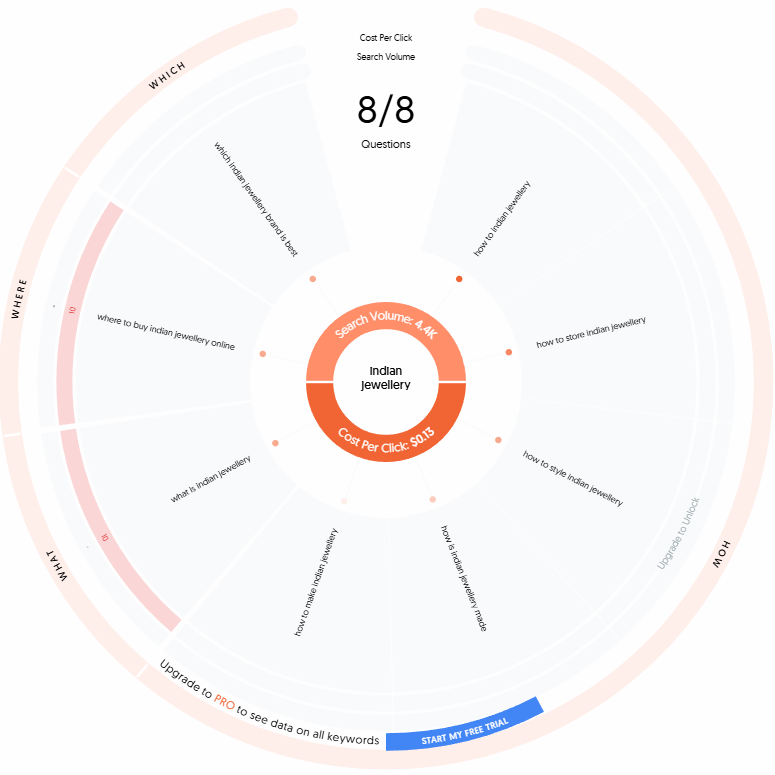
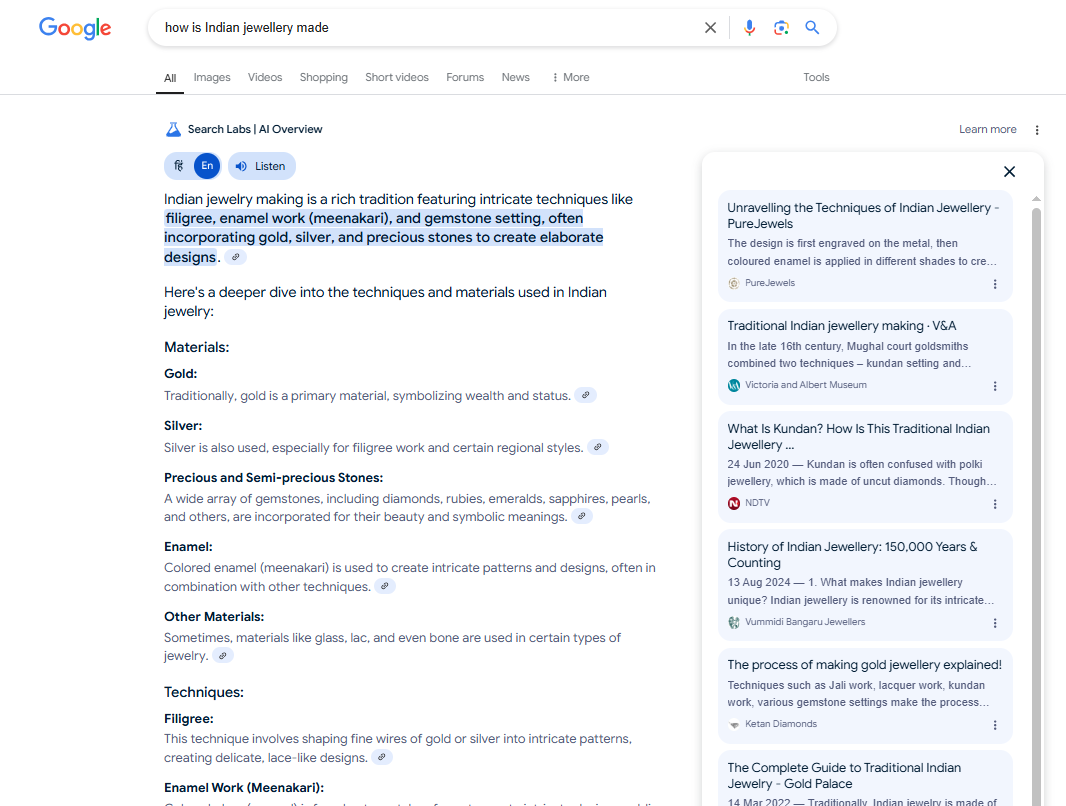
Next, pick up a query from the list and check search results. On Google, “How is Indian jewellery made?” query brings up AI-generated responses that detail materials, techniques, and inspirations, complete with reference links. By looking at top-ranking pages, which include jewellery brands, educational websites, and museum blogs, you can see that AI relies on quality and credibility. Through analyzing SERPs, you identify the content gaps and to address them, may explore topics like “A Day in the Life of an Indian Jewellery Maker,” “The Making of Indian Jewellery: Kundan, Polki & Meenakari,” and “Handmade vs. Machine-Made Indian Jewellery: What’s the Difference?”
What has changed in SEO since AI?
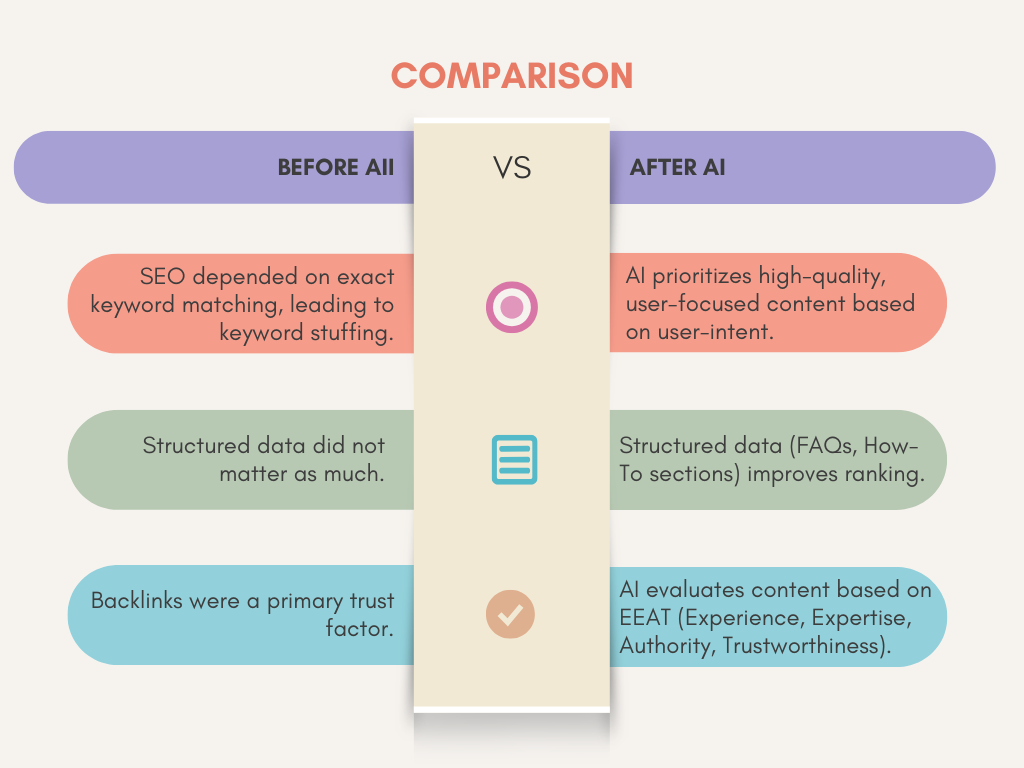
1. Prefer Content Quality Over Keywords
Before AI: Since search engines matched queries with exact keywords, earlier, websites stuffed keywords to improve rankings.
After AI: AI prioritizes high-quality, relevant, and user-friendly content. Instead of fixating on keywords, businesses should shift focus to creating content that genuinely addresses user queries. AI powered search engines can understand the intent behind searches—whether users seek information, navigation, or transactions—and tailors results accordingly.
Example:
– “Will shoes shrink in the dryer?” → AI answers the question.
– “Best running shoes under INR 3K” → AI ranks product listings and reviews.
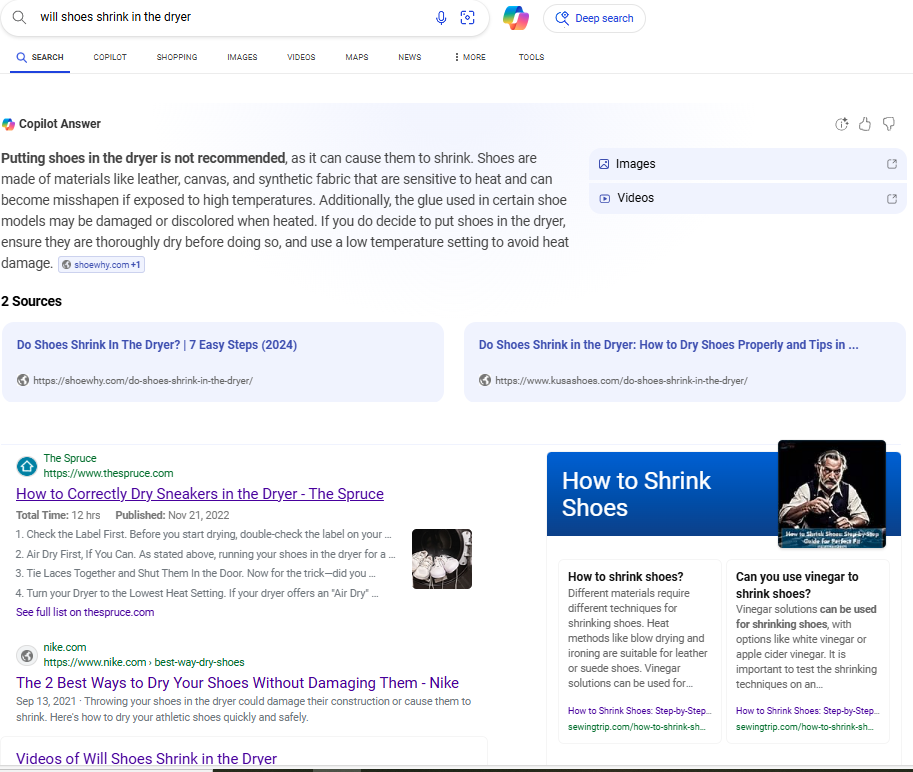
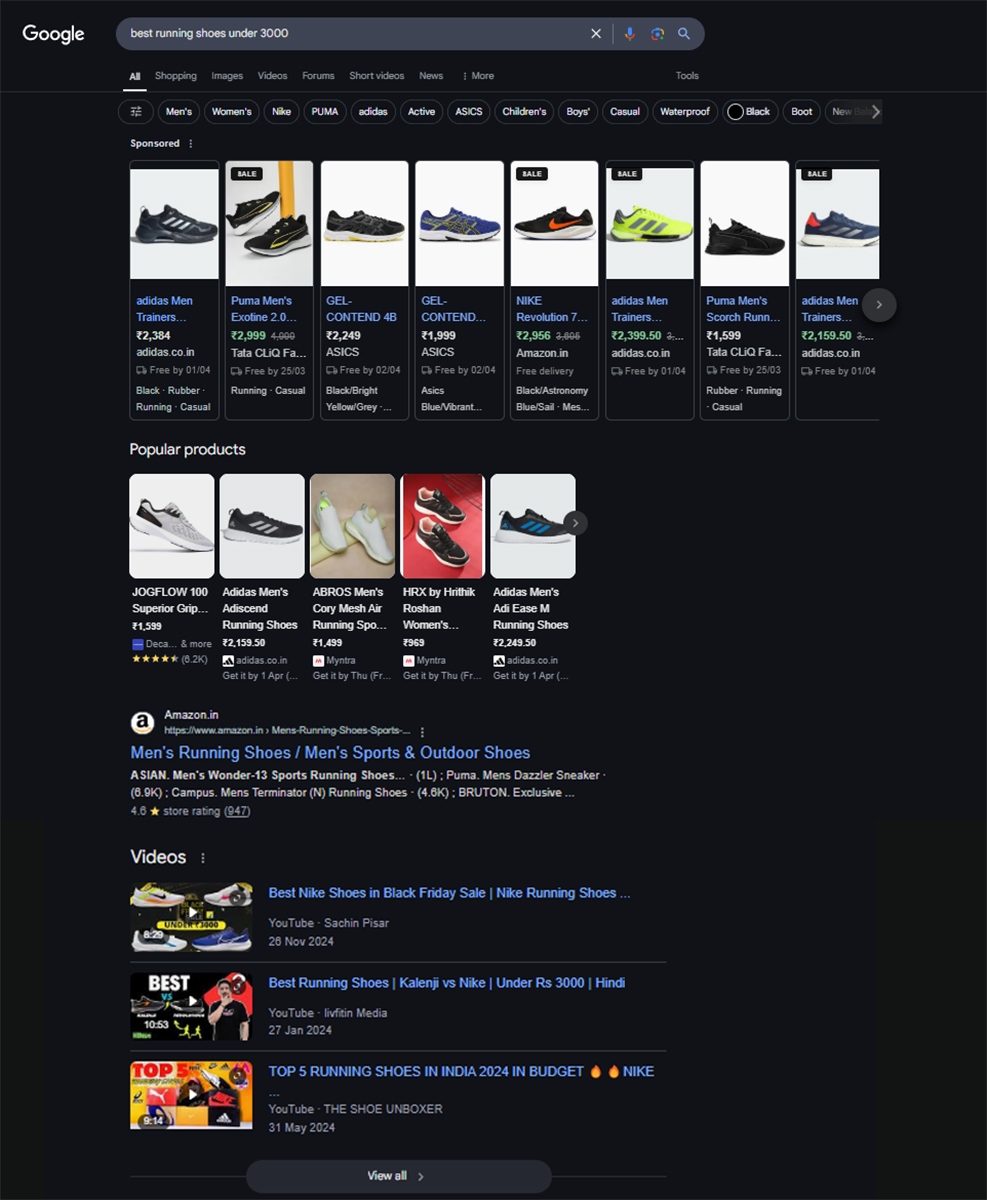
2. Pay Attention to Structured Data
Before AI: Structured data was not a major ranking factor.
After AI: Organizing your content with subheadings, tables, graphs, FAQs, How-To guides, and rich snippets helps search engines comprehend and rank your content better. Moreover, schema markups (microdata within your webpage’s HTML) enables search engine to process your content accurately. Why is that important? It increases the likelihood of your content being featured in AI-generated summaries.
3. Build Trust & Authority
Before AI: Backlinks were a primary trust factor.
After AI: In 2018, Google introduced a major update called the Helpful Content Update, accompanied by the E-A-T framework (Expertise, Authority, Trustworthiness). This framework was later expanded to E-E-A-T in 2022 with the addition of “Experience.” While E-E-A-T isn’t a direct ranking factor, it provides guidance for publishers on how to create high-quality content and serves as a manual for Google’s search quality raters when assessing content credibility.
What does this mean for you? Websites from relevant industries and blogs penned by credible authors with citations and references are more likely to gain visibility. Additionally, factors like secure payment gateways, dependable customer service, and positive reviews help build trust and enhance a page’s credibility.
How AI-based Search Engines Respond to Different Queries
To better understand the patterns of AI responses, we conducted searches using various types of queries on Google Search Labs and Microsoft Bing. The results revealed that AI-generated answers do not consistently appear at the top; it depends on the type of query. The results also showcased a mix of carousel posts, related questions, YouTube videos, and blogs, illustrating how search engines prioritize diverse and relevant content. Interestingly, the same query does not always elicit an AI-generated answer from an engine, indicating that these systems continue to evolve.
What else to keep in mind?
If anything, AI updates are simplifying the search process for both users and publishers. Simple, in-depth, and well-structured content now ranks higher than keyword-stuffed pages. Keywords still play a significant role when it comes to product-related searches, but search engines are increasingly prioritising EEAT factors to assess content quality, and consequently, to rank it higher.
Despite these changes, technical SEO remains essential. Websites need to prioritize user experience because search engines also consider page speed, image optimization (quality and description), meta tags, and structured data while ranking pages. Developing a mobile-friendly interface is a must, along with properly managed JavaScript and XML sitemaps. Fortunately, there are some great tools out there, like SEMrush and SEOptimiser, which can help you assess your website’s SEO health and provide actionable recommendations.
AI is reshaping search engines and so content strategies must evolve. But SEO isn’t obsolete—it’s just shifting toward usefulness over tricks.







